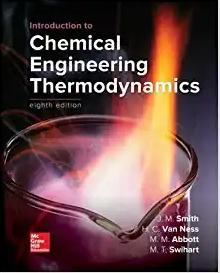The following problems involving chemical-reaction stoichiometry are to be solved through the use of reaction coordinates. (a)
Question:
The following problems involving chemical-reaction stoichiometry are to be solved through the use of reaction coordinates.
(a) Feed to a gas-phase reactor comprises 50 kmol·h−1 of species A, and 50 kmol·h−1 of species B. Two independent reactions occur:
A + B → C (I) A + C → D (II)
Analysis of the gaseous effluent shows mole fractions yA = 0.05 and yB =0.10.
(i) What is the reactor effluent rate in kmol·h−1 ?
(ii) What are the mole fractions yC and yD in the effluent?
(b) Feed to a gas-phase reactor comprises 40 kmol·h−1 of species A, and 40 kmol·h−1 of species B. Two independent reactions occur:
A + B → C (I) A + 2B → D (II)
Analysis of the gaseous effluent shows mole fractions: yC = 0.52 and yD = 0.04.
Determine the rates (kmol·h−1) of all species in the effluent stream.
(c) Feed to a gas-phase reactor is 100 kmol·h−1 of pure species A. Two independent reactions occur:
A → B + C (I) A + B → D (II)
Reaction (I) produces valuable species C and coproduct B. The side reaction (II) produces by-product D. Analysis of the gaseous effluent shows mole fractions yC = 0.30 and yD = 0.10. Determine the rates (kmol·h−1) of all species in the effluent stream.
(d) The feed to a gas-phase reactor is 100 kmol·h−1, containing 40 mol-% species A and 60 mol-% species B. Two independent reactions occur:
A + B → C (I) A + B → D + E (II)
Analysis of the gaseous effluent shows mole fractions yC = 0.25 and yD = 0.20. Determine:
(i) Rates in kmol·h−1 of all species in the effluent stream.
(ii) Mole fractions of all species in the effluent stream.
Step by Step Answer:

Introduction To Chemical Engineering Thermodynamics
ISBN: 9781259696527
8th Edition
Authors: J.M. Smith, Hendrick Van Ness, Michael Abbott, Mark Swihart





